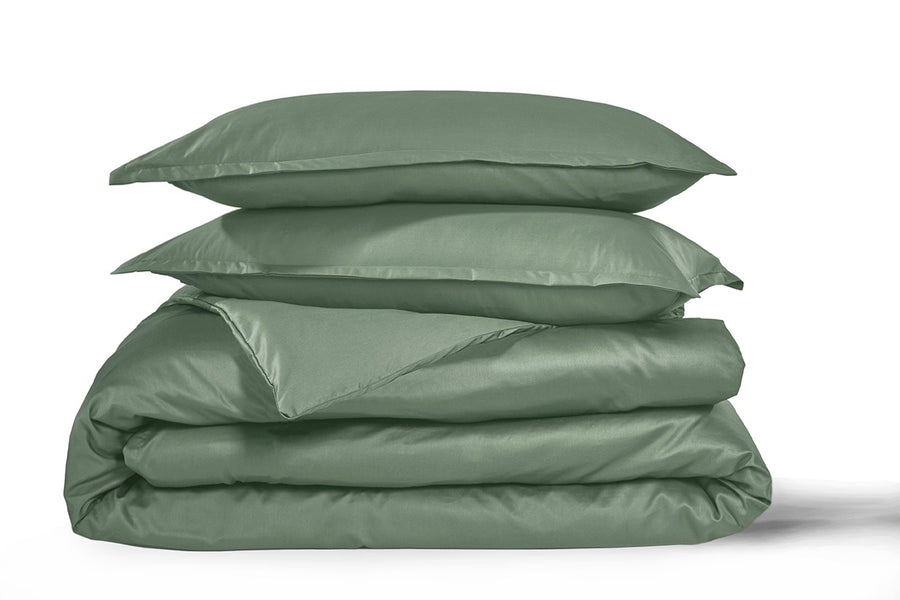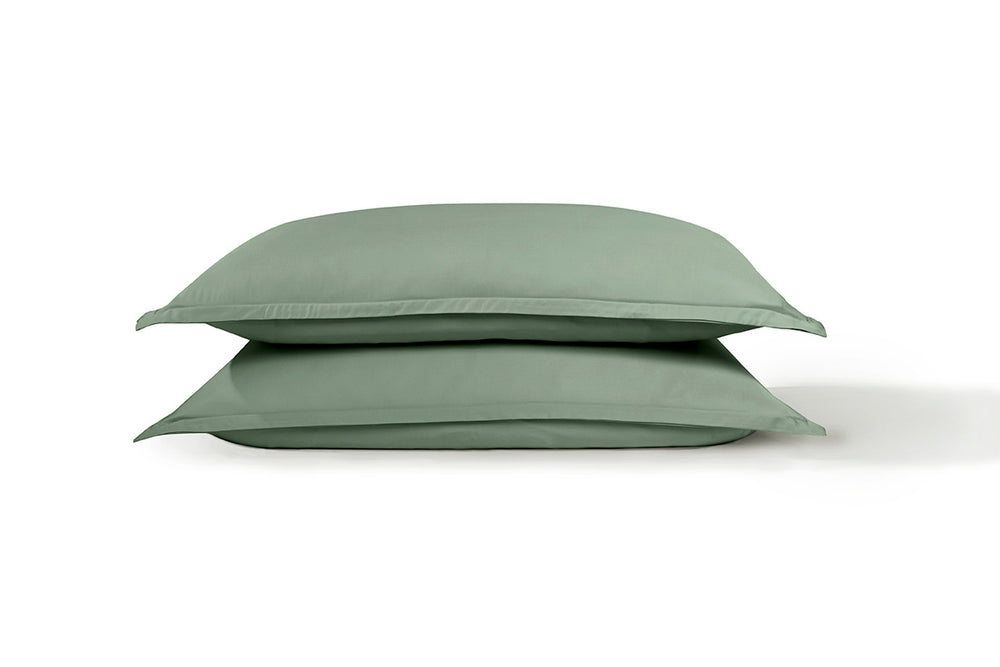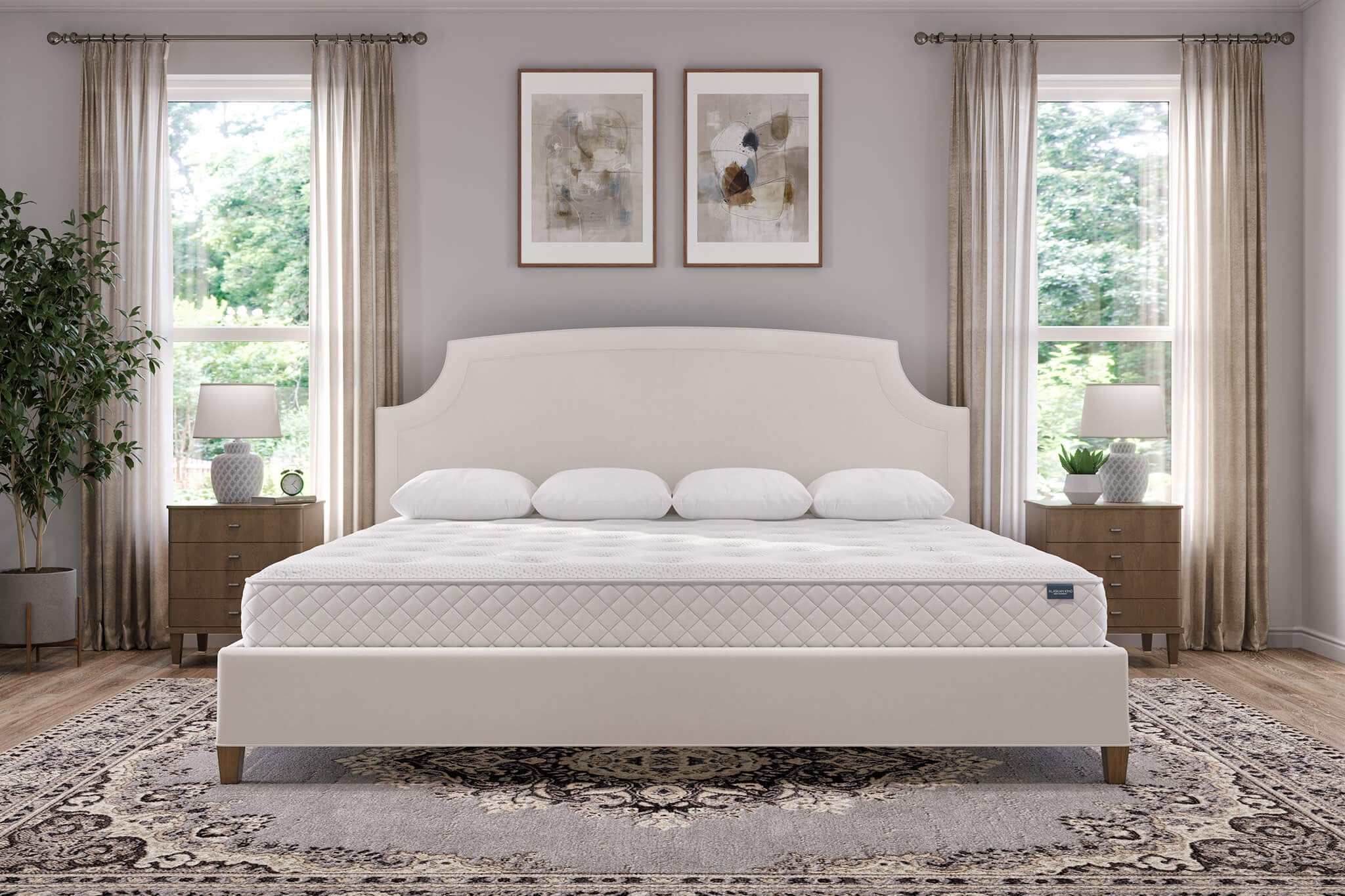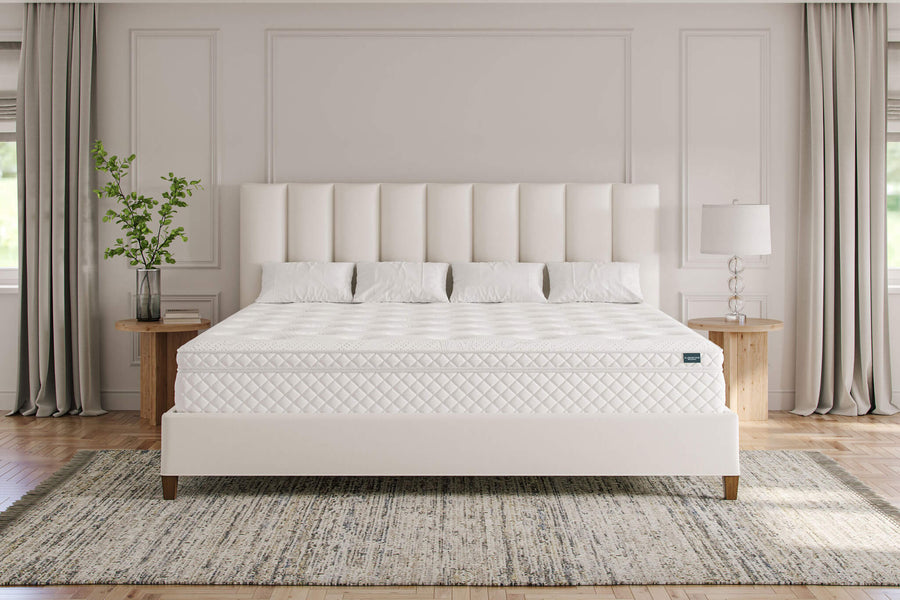9 Tips to Keep Your Kids from Rolling Off a Family-Size Bed
As every parent knows, co-sleeping nights can quickly turn into a game of midnight acrobatics, with little ones rolling and shifting all over the place. While waking up with your toddler’s foot in your face is adorable, the thought of them rolling off the bed isn’t quite as funny.

You’ve probably had those moments of panic, waking up to find your kid dangerously close to the edge or, worse, on the floor. It’s enough to turn your cozy night into a nerve-wracking experience.
The good news is that you can keep your kids safely tucked in all night with a few smart strategies.
Let’s go over some practical tips to make your co-sleeping arrangement as safe and comfortable as possible.
1. Use Bed Rails or Guardrails
One of the simplest and most effective ways to prevent your kids from rolling off the bed is to install bed rails or guardrails. These sturdy barriers create a secure edge, keeping your little ones safely in bed even if they toss and turn overnight.
Bed rails are easy to install and adjust to fit your Alaskan King bed perfectly. Whether you choose a full-length rail or a smaller, more portable option, this added layer of protection gives you peace of mind, knowing that your kids are safe from nighttime tumbles.
The great thing about bed rails is that they don’t interfere with your sleeping space, leaving everyone plenty of room to spread out.
2. Position the Bed Against the Wall
Placing one side of the oversize King bed against the wall creates a natural barrier that prevents little ones from tumbling off that side during the night. This setup maximizes safety and saves space in the room, making it a practical choice for people with smaller bedrooms.
If possible, position the bed so that the side with the wall is where your child typically sleeps. This way, you reduce the risk of falls without compromising on the comfort and coziness of your sleeping arrangement.
3. Use a Bed Bumper or Foam Guard
You can place bed bumpers or foam guards along the edges of the mattress to create a gentle but effective barrier that prevents rolling off the bed. Unlike bulky bed rails, these soft barriers blend right in with your oversize bedding, so your bedroom still looks like a serene haven and not a fortress.
And the best part? No assembly required. Just position them under the sheets, and you’re good to go.
You’ll rest easier knowing that even if your toddler moves toward the edge, they’ll be softly guided back to safety without a hard bump in the night. Plus, foam guards are easy to take along if you’re traveling – because, let’s face it, your kid’s rolling skills don’t take a vacation.
4. Create a Soft Landing Zone
Despite your best efforts, there’s always a chance that your little one might still find their way to the edge. To add an extra layer of safety, consider creating a soft landing zone around your oversize King mattress.
Place thick rugs, foam mats, or strategically positioned cushions on the floor beside the bed. This way, if your child does roll off, they’ll have a soft surface to land on, reducing the risk of injury.
These soft surfaces also make the area around your bed safer for daytime play so your kids can enjoy their time in the bedroom without worry. It’s a simple solution that offers peace of mind, both day and night.
5. Arrange Pillows Strategically
If you are not a fan of bed bumpers and foam guards, you can arrange pillows along the edges of your Alaskan King mattress. While not as secure as bed rails or bumpers, this method can be a handy stopgap, especially if your little one isn’t a particularly active sleeper.
Keep in mind that while pillows can be helpful, they aren’t a foolproof solution, especially for younger children who might be more prone to moving around in their sleep.
Another downside is that using a lot of pillows might make the bed feel more cramped, leaving less room for everyone to stretch out comfortably.
On the plus side, you’ll have extra pillows ready for pillow forts or family movie nights – because who doesn’t love a good pillow fort?
6. Educate Your Kids on Bed Safety
Teaching your kids about bed safety might not be the first thing that comes to mind, but it can make a big difference in keeping them safe during the night. As your children grow and start to understand more about their surroundings, it’s a great time to introduce the concept of staying safe in bed.
Start by making bed safety a fun and engaging topic. The key is to frame it in a fun way to make your kids remember these practices.
For example, you can create a game where the goal is to stay in the “safe zone” (the middle of the bed) all night. Or, you can make a bedtime story that features a character who learns the importance of staying safe and cozy in bed.
This strategy is particularly effective for kids around the age of three and up when they’re more capable of understanding simple instructions and following through.
7. Adjust Your Sleeping Arrangements
Sometimes, a simple shift in how you and your little ones sleep in bed can make all the difference in ensuring their safety.
Consider placing your child between you and your partner rather than at the edge of the bed. This way, you act as a natural barrier, keeping them safely in the middle.
If you have multiple kids in the bed, position the youngest or most active sleeper in the center to provide extra protection.
8. Keep Nighttime Routines Consistent
A consistent bedtime routine is the best way to wind down at the end of the day. When children know what to expect each night, they’re more likely to settle into a restful sleep in the middle of the bed, reducing the chances of them moving around or rolling off.
You can start by establishing a predictable series of calming activities before bed, such as a warm bath, reading a story, or singing a lullaby. These routines signal to your child that it’s time to sleep, helping them relax and stay in one place throughout the night.
Try to maintain the same bedtime and routine each night, even on weekends or when traveling. This practice improves sleep quality and minimizes the risk of nighttime accidents.
9. Consider a Larger Bed Frame
If you’re still co-sleeping in a regular-sized bed, it’s time for an upgrade. A giant bed ensures everyone has enough space to sleep comfortably and safely.
When the whole family shares a bed, the extra room means fewer chances of anyone rolling off or getting crowded into a less secure spot.
A bigger than King mattress reduces the risk of accidental bumps or falls, as there’s more surface area to accommodate everyone comfortably. In addition, it’s easier to incorporate other safety measures, like bed bumpers or pillows, without making the bed feel cramped.
Even among family-size beds, there are different options to suit your needs. On the smaller end, you have the Alaskan King Mini or Alberta King, which measures 96” x 96”. These sizes offer ample space for co-sleeping families while fitting comfortably in most bedrooms.
But if you’re looking for the ultimate in space and comfort, a larger option like the Alaskan King Biggie is even better. Measuring a whopping 144” x 108”, this bed provides maximum room for everyone, making sure that no one feels cramped or at risk of rolling off during the night.
Sleep Safer on an Alaskan King Bed
Co-sleeping with your little ones can be one of the most comforting and bonding experiences, but it also comes with a set of challenges – like ensuring everyone stays safely in bed through the night.
You can use our tips to create a safer, more comfortable sleeping environment that reduces the risk of your kids rolling off the bed while still enjoying those precious nighttime snuggles.
But if you’re still feeling cramped or concerned about space, it’s time to consider a bigger bed.
Upgrade to an Alaskan King bed and give your family the space and security they need for a restful night’s sleep.








